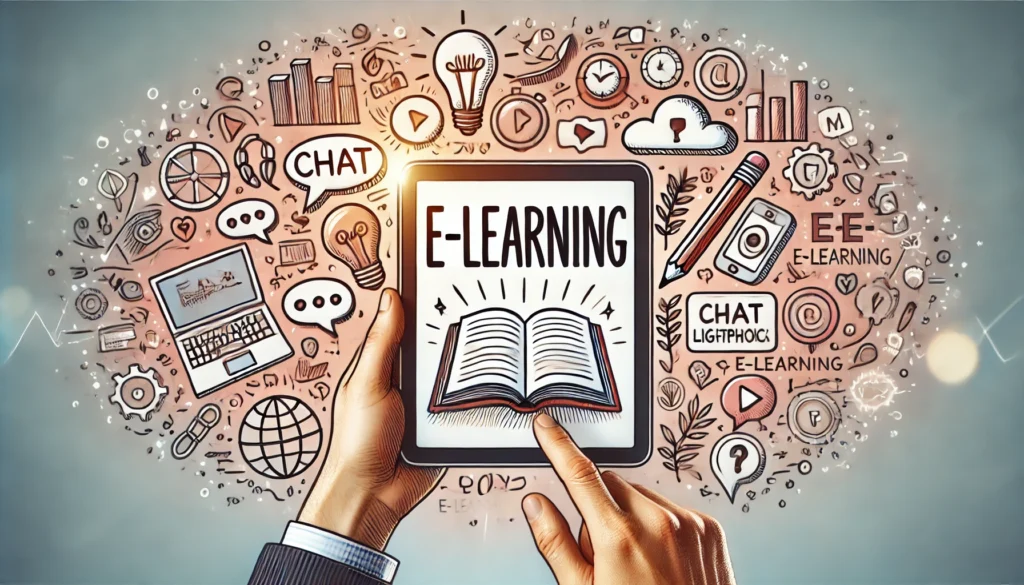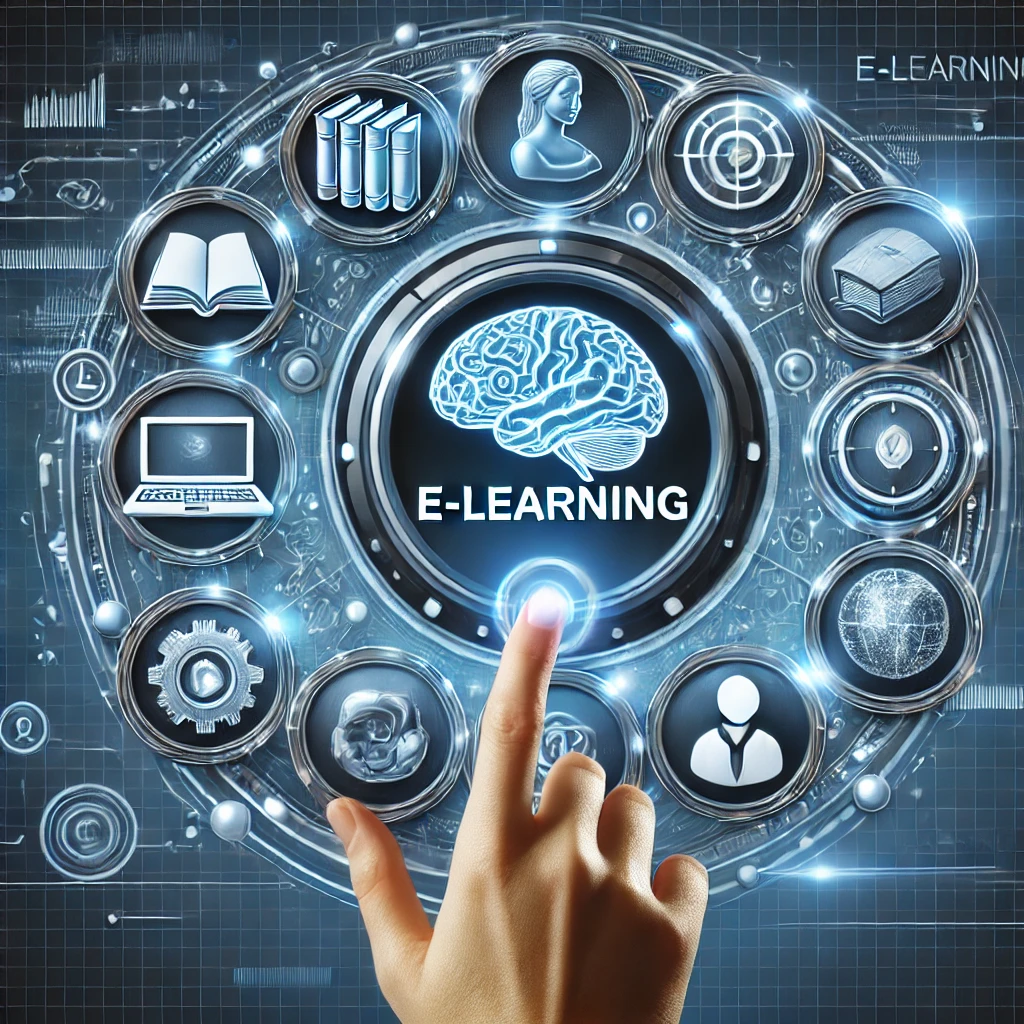Animation in E-Learning and Training

Table of Contents
E-learning and training have become essential in modern education and professional development. Animation plays a crucial role in enhancing the learning experience, making complex concepts easier to understand and engaging learners more effectively.
| Subject Title | Subject Description |
|---|---|
| Introduction | Overview of animation in e-learning and training |
| Benefits of Animation in E-Learning | How animation enhances learning experiences |
| Types of Animation in E-Learning | Different animation styles used in educational content |
| Best Practices for Using Animation | Guidelines for effective implementation of animation |
| Challenges and Solutions | Common obstacles and ways to overcome them |
| Case Studies | Examples of successful use of animation in training programs |
| Future Trends | Emerging trends in the use of animation for e-learning |
| Conclusion | Summary and final thoughts on animation in e-learning |
| FAQs | Frequently asked questions about animation in e-learning |
Benefits of Animation in E-Learning

Animation offers numerous benefits in e-learning environments:
- Enhanced Engagement: Animated content captures the attention of learners, making the learning process more enjoyable and engaging. The dynamic nature of animation can hold learners’ interest longer than static images or text, leading to more time spent on educational content.
- Simplified Concepts: Complex ideas can be broken down into simpler, visual representations, aiding in better comprehension. For instance, scientific processes, mathematical concepts, and historical events can be depicted through animations, making them easier to understand.
- Improved Retention: Visual aids, including animations, help learners retain information longer than text alone. The combination of visual and auditory stimuli reinforces memory, making it easier for learners to recall information when needed.
- Interactive Learning: Interactive animations encourage active participation, reinforcing learning through practice and repetition. Learners can manipulate variables, experiment with different outcomes, and engage with content in a hands-on manner.
- Accessibility: Animations can make content more accessible to learners with diverse needs, including those with learning disabilities. Visual representations can support understanding for learners who may struggle with traditional text-based content.
- Motivation and Enjoyment: Engaging animations can increase learner motivation and enjoyment, reducing the dropout rate and encouraging continuous learning. When learners find the content enjoyable, they are more likely to complete courses and pursue further learning opportunities.
Did You Know: Studies show that learners retain 95% of information when they watch it in a video compared to only 10% when reading text.
Types of Animation in E-Learning

Different types of animations can be used in e-learning to cater to various educational needs:
- Explainer Videos: Short videos that explain a concept or process in a concise and engaging manner.
- Interactive Simulations: Allow learners to interact with the content, experimenting with different scenarios and seeing immediate results.
- Whiteboard Animations: Illustrations drawn on a whiteboard to explain concepts dynamically.
- 3D Animations: Provide a realistic view of objects or scenarios, useful in fields like medicine and engineering.
- Motion Graphics: Combine graphic design with animation to present information in a visually appealing way.
Best Practices for Using Animation

To effectively use animation in e-learning, consider these best practices:
- Keep it Simple: Avoid overloading animations with too much information or too many visual elements. Focus on clear and concise messages that enhance understanding without overwhelming the learner.
- Focus on Learning Objectives: Ensure animations align with the educational goals and enhance the understanding of the subject matter. Every animation should have a clear purpose and contribute directly to the learning objectives.
- Use High-Quality Graphics: Invest in professional animations that are clear, visually appealing, and free from distractions. High-quality visuals maintain learner engagement and convey information more effectively.
- Incorporate Interactivity: Use interactive elements to engage learners and provide opportunities for hands-on learning. Interactive animations, such as quizzes, simulations, and clickable diagrams, encourage active participation and deeper understanding.
- Optimize for Different Devices: Ensure animations are compatible with various devices and screen sizes. Responsive design is crucial as learners may access content on desktops, tablets, and smartphones.
- Consider Cognitive Load: Be mindful of the cognitive load on learners. Avoid overly complex animations that may confuse rather than clarify. Break down information into manageable chunks and provide clear instructions.
- Use Narration and Sound Wisely: Complement animations with appropriate narration and sound effects to enhance understanding. Ensure that audio elements are clear, concise, and not distracting.
- Test and Iterate: Gather feedback from learners and make necessary adjustments to improve the effectiveness of the animations. Conduct usability testing to identify areas for improvement and ensure the animations meet the learners’ needs.
Did You Know: Interactive learning, which includes animations, can increase student achievement by 30%.
Challenges and Solutions

While animations offer many benefits, there are challenges to consider:
- Cost and Resources: Creating high-quality animations can be expensive and time-consuming.
- Solution: Prioritize key content and use simpler animations where possible.
- Technical Issues: Compatibility and performance issues may arise on different devices and platforms.
- Solution: Test animations on multiple devices and optimize them for different screen sizes and resolutions.
- Overuse: Excessive animation can distract rather than educate.
- Solution: Use animations judiciously, ensuring they serve a clear educational purpose.
Case Studies
Several organizations have successfully integrated animation into their training programs:
- IBM’s Cognitive Class: Uses animations to explain complex concepts in data science and AI, resulting in higher engagement and completion rates.
Link: IBM Training - Duolingo: Utilizes interactive animations to make language learning fun and effective, helping users retain new vocabulary and grammar rules.
- Khan Academy: Incorporates a variety of animated videos to teach subjects ranging from mathematics to history, enhancing understanding and retention.
Did You Know: Companies using e-learning tools, including animation, can boost productivity by up to 50%.
Future Trends

The future of animation in e-learning is promising, with several trends emerging:
-
Virtual Reality (VR) and Augmented Reality (AR):
These technologies are becoming more accessible, providing immersive learning experiences. VR can transport learners to different environments, such as historical settings or scientific laboratories, while AR overlays digital information onto the real world, enhancing interactive learning.
-
AI-Driven Animations:
Artificial intelligence can create personalized animations based on learners’ progress and preferences. AI can analyze learner data to adjust the difficulty level, provide real-time feedback, and tailor content to individual learning styles.
-
Micro learning:
Short, focused animations designed for quick learning sessions are gaining popularity. Micro learning caters to the modern learner’s busy schedule, providing bite-sized content that can be consumed on the go, enhancing retention and application.
-
Gamification:
Incorporating game-like elements in animations to make learning more engaging and rewarding. Gamified animations use points, badges, leader boards, and challenges to motivate learners and increase participation.
-
Interactive Storytelling:
Story-driven animations that involve the learner in the narrative. This approach enhances engagement by making learners active participants in the story, leading to better emotional and cognitive connections with the content.
-
Haptic Feedback:
Integration of haptic feedback in animations, providing tactile responses to learners. This technology can enhance the sensory experience, making simulations and interactive animations more realistic and immersive.
-
Collaborative Learning:
Animations that facilitate group learning and collaboration. These animations can include features for real-time interaction, discussion, and problem-solving among learners, promoting social learning and teamwork skills.
Conclusion
Animation is a powerful tool in e-learning and training, offering numerous benefits from enhanced engagement to improved retention. By following best practices and addressing challenges, educators and trainers can create effective and enjoyable learning experiences. The future holds exciting possibilities with emerging technologies like VR, AR, and AI.
FAQs
What are the benefits of using animation in e-learning?
Animation enhances engagement, simplifies complex concepts, improves retention, and facilitates interactive learning experiences.
What types of animations are commonly used in e-learning?
Common types include explainer videos, interactive simulations, whiteboard animations, 3D animations, and motion graphics.
How can I ensure the effectiveness of animations in my e-learning content?
Focus on simplicity, align with learning objectives, use high-quality graphics, incorporate interactivity, and gather feedback to make improvements.
What are the challenges of using animation in e-learning?
Challenges include cost and resources, technical issues, and the potential for overuse, which can be mitigated by strategic planning and testing.
What future trends should I watch for in e-learning animation?
Keep an eye on VR and AR, AI-driven animations, microlearning, and gamification as these technologies evolve and become more integrated into e-learning.
Animation in E-Learning and Training: Elevating Brand Identity: An Article by Nicole Delgado 2024 | CMO | Explainer Video Company | Animated Explainer Videos For Business




